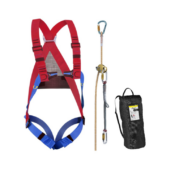Introduction
Optimising the procurement process is critical in an era where efficiency and cost-effectiveness drive corporate success. Paper-based operations and human inefficiencies in traditional procurement can cause delays, higher prices, and missed opportunities.
Modern procurement technology and techniques are vital for improving procurement processes, reducing costs, and strengthening supplier relationships.
This article covers the fundamental processes and best practises for optimising procurement in 2024, showing how technology and strategy can make procurement a competitive advantage.
Definition: Procurement
Procurement streamlines an organization’s procurement process to save money, time, and generate win-win supplier partnerships. Purchases might be direct, indirect, reactive, or proactive.
What is a procurement process?
Organisations buy products and services through a systematic procurement procedure. This strategy cuts costs, speeds operations, and creates supplier partnerships.
Getting items or services from demand to purchase order and invoice approval is the procurement process. We use procurement and purchase interchangeably, although they vary.
While purchasing is the overall process of procuring products and services for an organisation, procurement defines the actions involved in reviewing, ordering, obtaining, and paying for them. Organisational procurement is unique to its setting and activities.
No matter the complexity, procurement management involves procedure, people, and paperwork.
1. Process in Procurement Process
Process includes assessing, ordering, receiving, and paying for goods/services.
2. People
Stakeholders initiate or authorise every procurement cycle stage. The buying risk and value determine the number of stakeholders.
3. Paper
The paperwork and documentation at every stage of the procurement process is collected and preserved for reference and auditing.
Steps in Procurement Process
The procurement process includes requirements determination, supplier research, value analysis, purchase request, reviewal phase, conversion to purchase order, contract administration, monitoring/evaluation of received order, three-way matching, payment fulfilment, and record keeping.
The procurement process has seven main steps:
- Step 0: Needs Recognition
- Step 1: Requisition
- Step 2: Requisition Review
- Step 3: Solicitation
- Step 4: Assess and Contract
- Step 5: Order Management
- Step 6: Approvals and Disputes
- Step 7: Recording
Step 0: Needs Recognition
Needs awareness helps organisations prepare for timely and cost-effective purchase of products and services.
Step 1: Requisition in Procurement Process
Purchase requisitions are written or electronic requests from internal users/customers to the procurement staff. It contains crucial information for buying the proper goods, services, or works.
Step 2: Requisition review in Procurement Process
The purchase requisition must be authorised and budgeted before procurement may begin. Functional managers or department heads analyse the requisition package, verifying if the requested products or services are needed and whether financing is available.
Rejected purchase requests are given back to the requisitioner with the reason for denial. Easy buy order software can manage all these.
Step 3: Solicitation
The procurement team will create a procurement strategy and solicitation procedure after approving a demand. This solicitation plan’s breadth relies on the requirement’s complexity.
After budget approval, the procurement team sends many RFQs to vendors to evaluate quotes and find the best provider.
Step 4: Assess and contract in Procurement Process
The procurement team and evaluation committee will assess provider bids and delivery schedules once the solicitation process is concluded to decide which supplier best meets the current demand. To swiftly analyse crucial words and conditions in future contracts, employ legal AI software for contract assessment.
After choosing a supplier, the purchase order is sent to them after contract negotiation and signing. Suppliers who acknowledge POs form legally enforceable contracts.
Step 5: Manage orders in procurement process
Suppliers get buy orders based on freshly negotiated contracts, standing agreements, and list prices. The provider meets deadlines. Once received, the buyer checks the order and tells the supplier of any difficulties.
Step 6: Approvals and disputes
A competitive edge is gained by using procurement software like Kissflow Procurement Cloud for this essential phase. Kissflow lets you three-way match GRN, Supplier Invoice, and PO to verify order receipt and inconsistencies. After three-way matching, the invoice is accepted and sent for payment.
Step 7: Recording
Buyers record payments for bookkeeping and auditing. Purchase requests, invoices, and other relevant documentation are centralised.
Procurement Challenges
Without a complete procurement program to expedite the aforementioned stages, you would encounter several obstacles. You may have these procurement issues:
Supplier fragmentation in procurement process:
Procurement generally includes several vendors from different categories.
Managing a diverse supplier base can cause uneven service, complex contract administration, and trouble negotiating volume discounts.
Absence of visibility:
Limited procurement cost visibility makes tracking and analysing spending difficult. Visibility issues might affect cost control, budgeting, and strategic decision-making.
Extreme spending:
Multiple organisational stakeholders may make purchases separately. After decentralisation, employees may spend without approval, leading in greater expenses, variable quality, and lost savings possibilities.
Manual methods:
Purchases made manually and on paper can be slow, error-prone, and inefficient. Laborious tasks like purchase requisitions, approvals, and invoice processing can reduce productivity and increase errors.
Manage compliance and risk in Procurement Process:
Internal policy, regulatory requirements, and supplier agreements govern procurement. Risks like supplier non-compliance and data breaches are difficult and time-sensitive to manage.
Few strategic goals:
Transactional procurement may prioritise operational demands over strategic value. It might be difficult to find cost-saving, supplier consolidation, and strategic alliances.
Organisations must use effective procurement procedures to increase data visibility, stakeholder cooperation, and strategic sourcing to optimise procurement operations.
Increase procurement efficiency
After covering procurement difficulties, here are some ways to overcome them and create a robust and optimised procurement process in your organisation.
Technology and automation help to simplify and digitise procurement. Using a source-to- pay procurement system can help you manage contracts, invoices, purchases, and suppliers, thereby automating processes and minimising administrative errors and increasing output.
Establish a central procurement system for your staff so they may plan all of the operations. By guaranteeing openness and responsibility, simplifying and automating the procurement process will increase efficiency and cost savings.
Perform a thorough procurement expenditure analysis to identify areas of cost-cutting potential, grasp spending patterns, and rank critical sourcing categories. This study guarantees bulk savings, helps to combine suppliers, and enhances contracts.
Strategic sourcing enhances procurement, competitive bidding, and negotiation by use of suppliers. By means of strategic partnerships and identification of important suppliers, this helps you to enhance supplier relations and save costs.
Clearly state procurement policies.
Establish industry standards, internal policies, and laws. This facilitates control of supplier risk, expenses, and approvals. Documentation and audit trails allow one to prove compliance.
Encourage joint efforts across departments and stakeholders to better match purchases to their needs. Involve end users in supplier evaluation and choice if you want to satisfy user needs and raise adoption.
Interface with another system:
Use ERP systems and connect accounting tools to guarantee data flow. This increases process efficiency and saves duplicity.
Frequent review of supplier performance helps you to develop KPIs for service, delivery, quality, and price. With this knowledge, assess vendors and make wise judgements on contract renewals, retention, and alternatives.
Always keep improving.
Promote constant indirect procurement growth. Track industry trends, obtain input from stakeholders, and build feedback loops to identify areas needing improvement and enable continuous optimisation.
These approaches enable businesses to raise strategic value, cost-effectiveness, and indirect procurement efficiency.
Conclusion
Optimising procurement streamlines processes and positions your company for success. Automation, centralisation, and strategic sourcing may help firms solve procurement issues and save money.
Adopting new technology and refining procurement methods will boost operational performance, supplier relations, and organisational growth. Companies may turn procurement into a strategic asset that delivers value and long-term success with the correct approach.

















